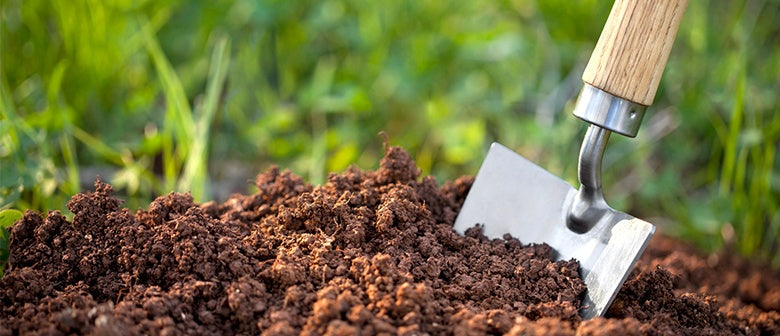Preparing your Soil for Spring
Get Your Soil Spring-Ready: The Power of Compost, Manure, Mulch — and a Few Extras
As the ground begins to warm up in early spring, your plants are primed for a growth spurt—but if your soil isn’t in great shape, you may not get the results you're hoping for. Healthy soil is the foundation of a thriving garden. With just a little attention and the right amendments, you can create a nutrient-rich, microbe-packed environment that supports vibrant plant life all season long.
I love soil—truly. It’s a living ecosystem, filled with microorganisms that nourish your plants and help them thrive. By feeding your soil properly in early spring, you’re not just improving this season’s harvest—you’re building long-term resilience into your garden.
The best approach? Focus on three simple steps: compost, manure, and mulch. Add in blood and bone and lime, and you've got a complete recipe for soil success.
1. Compost: A Soil Superfood
Compost is decomposed organic matter—kitchen scraps, lawn clippings, leaves—and it's the first thing I add to my garden in spring. Compost improves soil structure, aerates it, and increases water retention, all while adding nutrients and beneficial microbes.
As a bonus, compost reduces how often you need to water—essential as temperatures rise. You can make your own compost in a bin or heap, or grab a bag from the garden centre (my usual go-to when time is short).
Compost

2. Manure: Organic Matter with Muscle
Manure is another soil conditioner that works wonders in spring. It boosts nutrient levels, encourages earthworm activity, and improves soil texture. Just make sure it’s well-aged—fresh manure can burn tender new growth.
Here are my favourites:
-
Sheep Pellets: Easy to apply and packed with lanolin, which promotes earthworm activity. These pellets slowly release nutrients and can be dug in for deep-rooted crops or scattered for quick growers. I even pop a few handfuls in planting holes for trees and shrubs.
Pro tip: Soak pellets in a bucket of water to create a liquid fertiliser. You can reuse the mix multiple times until the pellets fully break down—great value and great results!
-
Chicken Manure: High in nitrogen and potassium, ideal for leafy greens and flowering plants. Just be sure it’s composted before applying.
-
Cow Manure: Not especially high in nutrients but perfect for breaking up heavy clay or sandy soils. Always age it before use.
Manure
3. Blood and Bone: A Spring Essential in New Zealand
Yes, blood and bone fertiliser is commonly used in New Zealand gardens during spring. It’s rich in nitrogen and phosphorus—key nutrients for lush foliage and strong root development. It also helps condition the soil by stimulating microbial and earthworm activity.
🪱 How to use it:
-
Apply at a rate of 250g per square metre
-
Mix it well into the soil
-
Water thoroughly after applying
⚠️ Important to note:
-
Avoid using it in pots or containers
-
Don’t apply it in full sun, as it can scorch plant leaves
4. Lime: Balance and Boost Your Soil
Spring is also a great time to apply lime, especially between February and April in New Zealand. Lime is used to raise the pH of acidic soils, which makes essential nutrients more available to plants. Most plants thrive in a pH between 6.0 and 7.5, and lime helps bring your soil into that sweet spot.
🌱 Benefits of using lime:
-
Raises soil pH, neutralising overly acidic conditions
-
Improves nutrient availability, particularly phosphorus and calcium
-
Enhances soil structure and root development
-
Increases biological activity, especially beneficial for young seedlings
🕒 Timing tips:
-
Apply at least 14 days before sowing or planting
-
Do not apply nitrogen-rich fertilisers (like blood and bone) immediately after lime—wait 2 to 3 weeks to avoid nutrient lock-up or chemical reactions
5. Mulch: The Finishing Touch
Finally, once you've enriched your soil with compost, manure, and fertilisers, top it all off with mulch. Mulch acts as a protective blanket, conserving moisture, suppressing weeds, and regulating soil temperature.
Here are a few options:
-
Bark or stones: Ideal for ornamental gardens and long-lasting coverage
-
Straw or pea hay: My favourite in the vege patch—pea hay breaks down quickly and adds nitrogen as it decomposes
Organic mulches break down over time, feeding the soil and improving structure year after year.
Bringing It All Together
With just a little effort in early spring, you can give your soil exactly what it needs to thrive all season long. By focusing on compost, manure, blood and bone, lime, and mulch, you're building a strong, balanced foundation for your plants to flourish.
Remember: healthy soil means healthier plants. Whether you're prepping veggie beds, flower gardens, or planting new trees, feeding your soil now will reward you with stronger growth, better resilience, and a more productive garden.
These five steps—compost, manure, blood and bone, lime, and mulch—aren’t just a seasonal routine; they’re a long-term investment in your garden’s success.
Happy gardening! 🌿

















